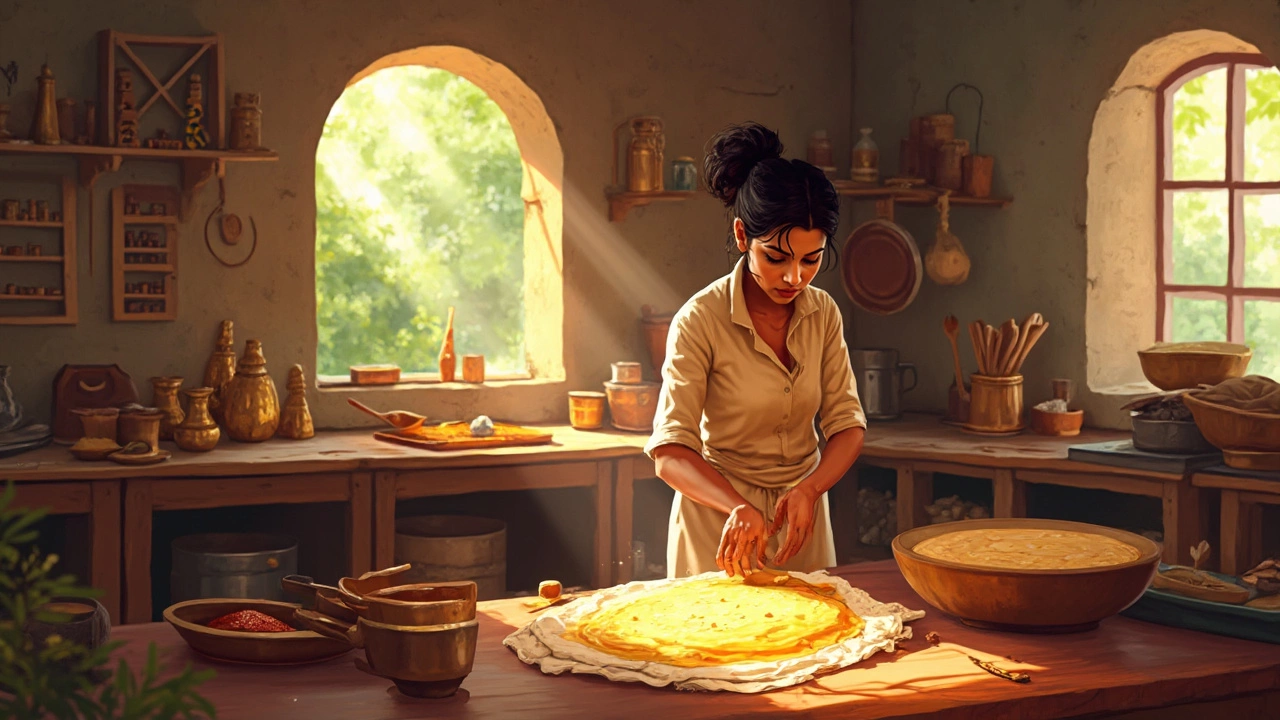Perfect Dosa: Master the Art of a Crispy Crepe
When talking about Perfect Dosa, a thin, crispy Indian crepe made from fermented rice‑and‑lentil batter. Also known as southern pancake, it brings together texture, flavor, and a pinch of science. A great dosa starts with the right dosa batter, which is basically a blend of rice, urad dal, and sometimes a splash of water. The batter’s fermentation, the dash of curd or yogurt, and the timing of baking soda addition all shape the final crunch.
First, understand that perfect dosa isn’t magic; it’s a set of manageable steps. The batter’s texture should be smooth, like a thin pancake mix, but not watery. This consistency comes from soaking rice and dal long enough—usually 4‑6 hours—so the grains soften and release starch. When you grind them, you get a fine slurry that ferments into a slightly sour, airy mix. Fermentation is the engine here: it creates natural bubbles, lifts the batter, and adds that signature tang. Skipping this step is the fastest way to end up with a flat, dense crepe.
Now, let’s talk about curd. Adding a tablespoon of plain yogurt to the batter before it rests does two things: it boosts acidity, which speeds up fermentation, and it stabilizes the batter’s pH, making the final dosa crispier. Think of curd as a friendly starter culture that works alongside the natural microbes already present. If you’re in a hurry, use a bit of lemon juice instead, but expect a slightly different flavor profile.
When the batter is ready, the timing of baking soda matters. A pinch (about ¼ teaspoon per 2 cups of batter) right before you heat the pan releases carbon dioxide, forming extra bubbles that lift the surface. Too much soda makes the dosa spongy; too little leaves it flat. Sprinkle it over the batter, give a quick stir, and you’ll notice a faster spread when it hits the hot skillet.
Heat control is the next big player. The pan must be hot enough that the batter sizzles the moment it touches, but not smoking. A well‑seasoned cast‑iron skillet or a non‑stick griddle works best. Pour a ladleful, swirl it in a circular motion, and watch the edges turn golden in seconds. If the center stays pale, lower the heat; if it burns before crisping, raise it a notch.
Even with perfect batter, mistakes happen. Common issues include a batter that's too thick (resulting in a fluffy, pancake‑like dosa) or too thin (producing a brittle sheet). Adjust by adding a little water or letting the batter sit a bit longer. Also, if your dosas consistently stick, the pan might need a thin brush of oil or a quick wipe with a paper towel—just enough to prevent adhesion without greasing the whole surface.
Beyond the basics, you can experiment with variations that still aim for that perfect texture. Adding a handful of cooked rice or poha makes the dosa softer, while a sprinkle of fenugreek seeds during soaking adds aroma and a slight crunch. Each tweak respects the core principles: good fermentation, balanced acidity, and precise heat.
Below you’ll find a curated set of articles that dive deeper into each of these topics—how to ferment batter quickly, the science behind curd in dosa, the right amount of baking soda, and troubleshooting tips for common dosa problems. Use them as a toolbox to fine‑tune your technique and enjoy consistently perfect dosas every time you cook.

Quick Tips for Perfect Dosa Batter Without Yeast
Mastering dosa batter without yeast can transform your breakfasts and snacks. Learn the essential elements and techniques for preparing perfect batter at home. From selecting the right ingredients to understanding fermentation, make restaurant-quality dosas effortlessly. These tips will help you avoid common pitfalls and enjoy delicious, crispy dosas every time.